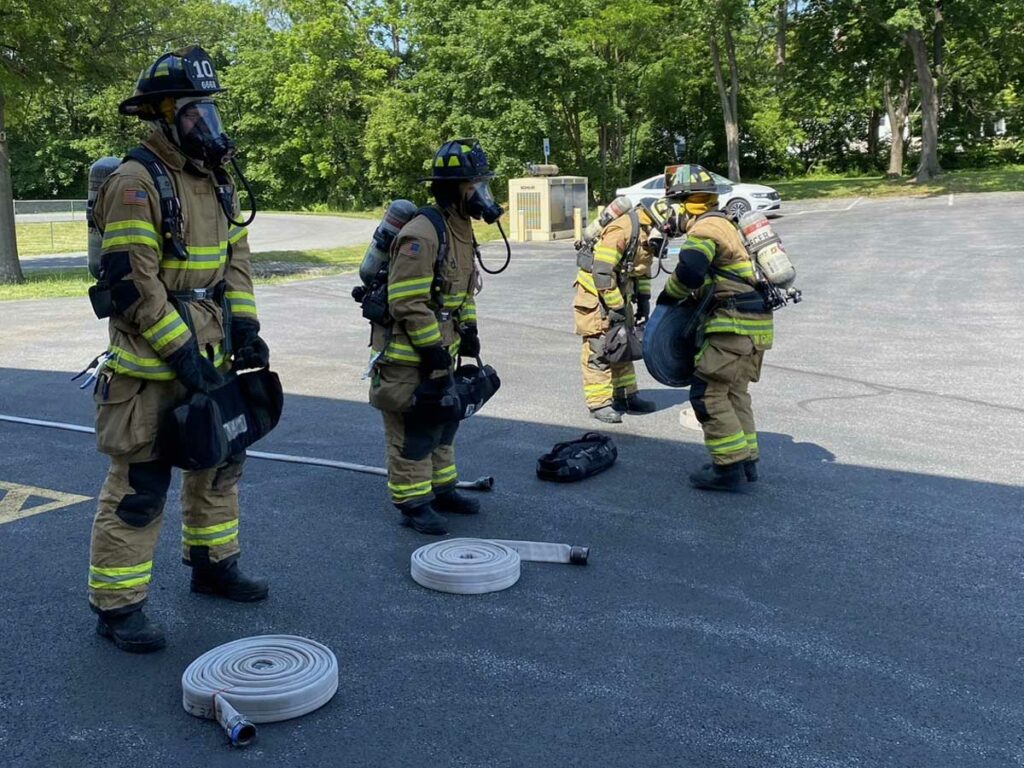
By Thomas Coe
Life in the fire service is no easy task. To meet the demands of the job and to perform optimally, firefighters must place a heavy emphasis on both physical and mental health. As outlined in the 2020 article “Humans Over Hardware,” Frederick County (MD) Division of Fire and Rescue Services (DFRS) took the initiative to pilot a human performance program as a way to offer an innovative solution to occupational stressors. September 2019 was the beginning of what we, as a department, call a “proactive step” in the right direction. Since the start of the program in Frederick, we have witnessed the positive impacts human performance brings to the table, both in recruit training and at each of the 30 firehouses. From recruits to senior members, all exposed to the program are reaping the benefits. Human performance, in every aspect, is a priority here in Frederick, and we truly believe in investing in our members’ health and wellness. The health of the force is a top priority, and we intend to keep it that way.
- Are You a Tactical Athlete?
- Five Steps to a Firefighter Fitness/Wellness Culture
- A Model for Reducing Injuries and Their Costs
- Wellness and Fitness: Is It About Time for a Mandatory Program?
By prioritizing injury risk reduction and enhancing the robustness of the force, Frederick County has been able to realize financial rewards. In February 2022, Frederick County DFRS put together a cost savings analysis to better understand the financial impact of having a human performance specialist embedded within the department. The numbers were staggering. In the two fiscal years prior to starting the program, the department averaged 116 insurance claims, costing $1,053,670. After partnering with O2X Human Performance, a training and education company specializing in customized programs for the tactical population, that cost dropped to just more than $549k in the first fiscal year—saving a sizable amount of money that could then be reinvested into health and wellness initiatives.
Prior to the start of the program, Frederick’s costs (~$1M/year) were similar to that of a peer department in the mid-Atlantic region of a comparable size and demographic. The average incurred injury costs per year are significantly lower in FY21 after a full year with a full-time human performance specialist in comparison to the peer department. These numbers closely align with the data in a recent article published in the National Strength & Conditioning Associations (NSCA) Tactical Strength & Conditioning (TSAC) Journal (1) stating that seven years following implementation of the International Association of Firefighters (IAFF) Wellness Fitness Initiative (WFI), fire departments that were not compliant with the WFI typically saw a 22% increase in total claims and a 35% increase in the average cost per claim, while those in compliance only saw a 5% increase in claims with the average cost per claim decreasing by 23% (2). This increase in claims was attributed to more physical activity engagement and members being more comfortable in reporting injuries.
The table below, Figure 1, displays the peer and historical comparison of number of claims and average incurred costs per year. Before the program, Frederick’s costs were similar to the peer departments (~$1M/year), as stated above. After taking on health and wellness initiatives, the number of claims and the number of claims from preventable injuries (e.g. strains) is down on average; the average incurred cost per year is significantly lower.
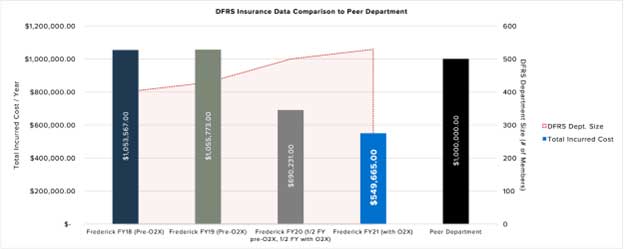
It is also worth noting that during this time, the department experienced tremendous growth in hiring an additional ~150 firefighters. In the two fiscal years before the program’s inception, preventable injuries, including strains and sprains, accounted for 37% of the department’s claims, while that number dropped to just 30% after the first year with a full-time human performance specialist, Kayla Stoneback. As a result of the impact of the program, we have observed injury decreases, elimination of rhabdomyolysis cases, and fewer insurance claims with each fire academy class, as well as reductions in insurance claims within the department.
The table below (Figure 2) shows workers’ compensation claims and costs by fiscal year. The number of preventable injury claims (strains and “other”) and associated costs are declining at the department level.
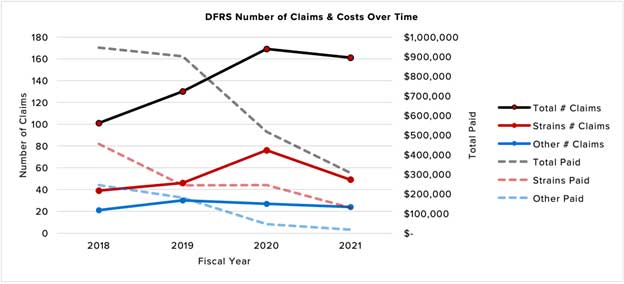
The data above summarizes the cost savings and injury reduction since the Frederick County DFRS piloted the human performance program in September 2019, reinforcing its primary goal of improving the overall health, wellness, and performance of DFRS.
In addition to the quantifiable impacts outlined in this article, the Frederick County DFRS has benefited from a positive shift in health and wellness culture. Throughout the department, new recruits and veteran firefighters are finding ways to improve their health and well-being on and off the job. This is of utmost importance as research states that poor physical fitness has been reported as one of the primary causes of firefighter line-of-duty injuries (3). This culture shift creates a better equipped force to handle the challenges of being a firefighter.
This program is preparing members of Frederick County DFRS to meet the demands of the job and is an invaluable asset to our department. While the cost savings serve as a quantifiable measure of the impact, we’re confident other less tangible occupational performance outcomes and career longevity will also benefit greatly from the program.
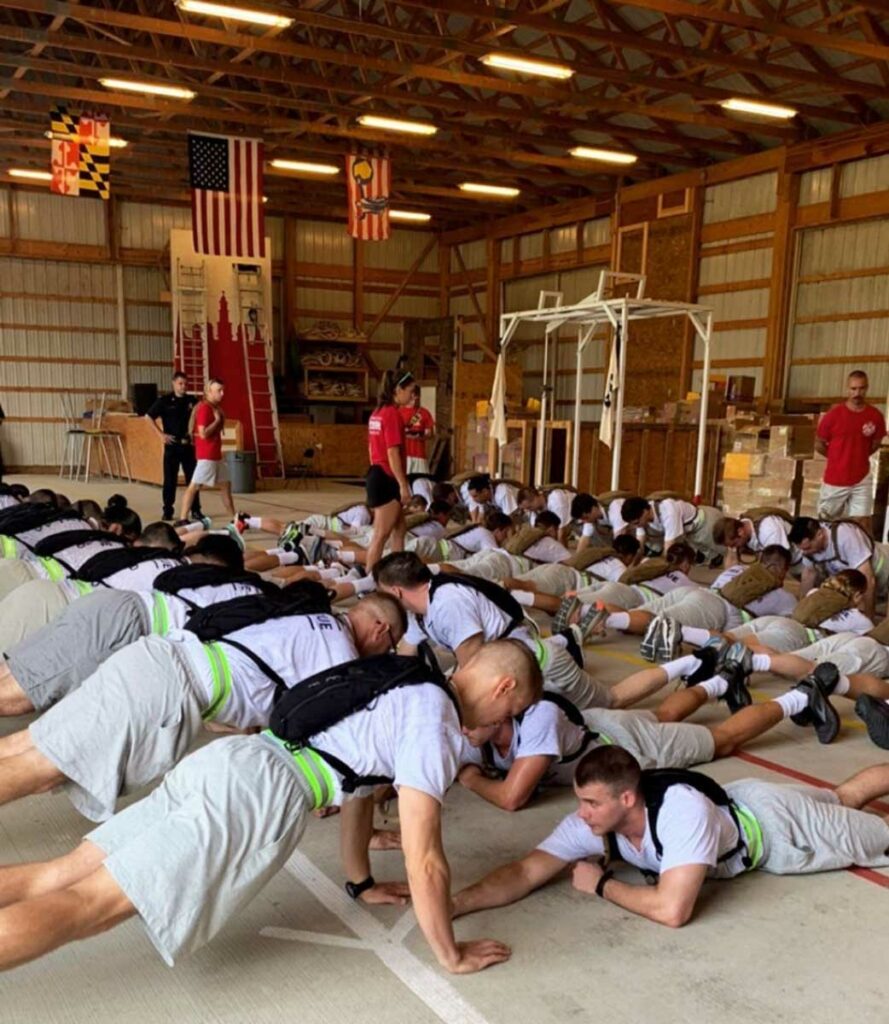
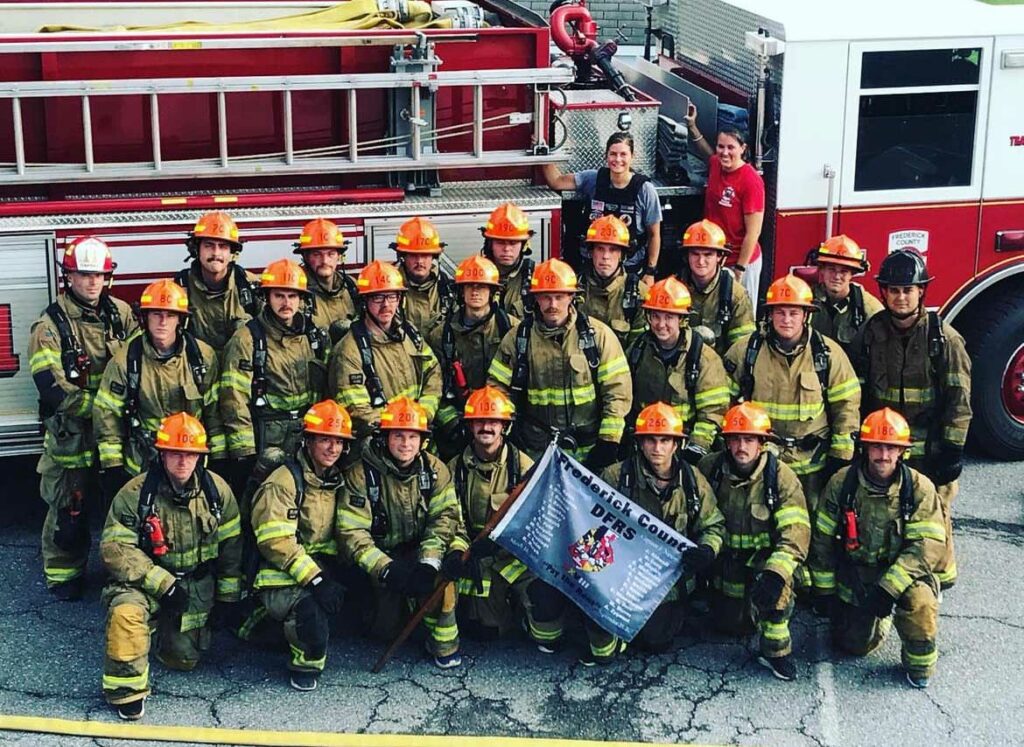
Tom Coe is a 29-year veteran of the fire service. He currently serves as the fire chief of the Frederick County (MD) Division of Fire and Rescue Services, where he has worked for the last 22 years.

